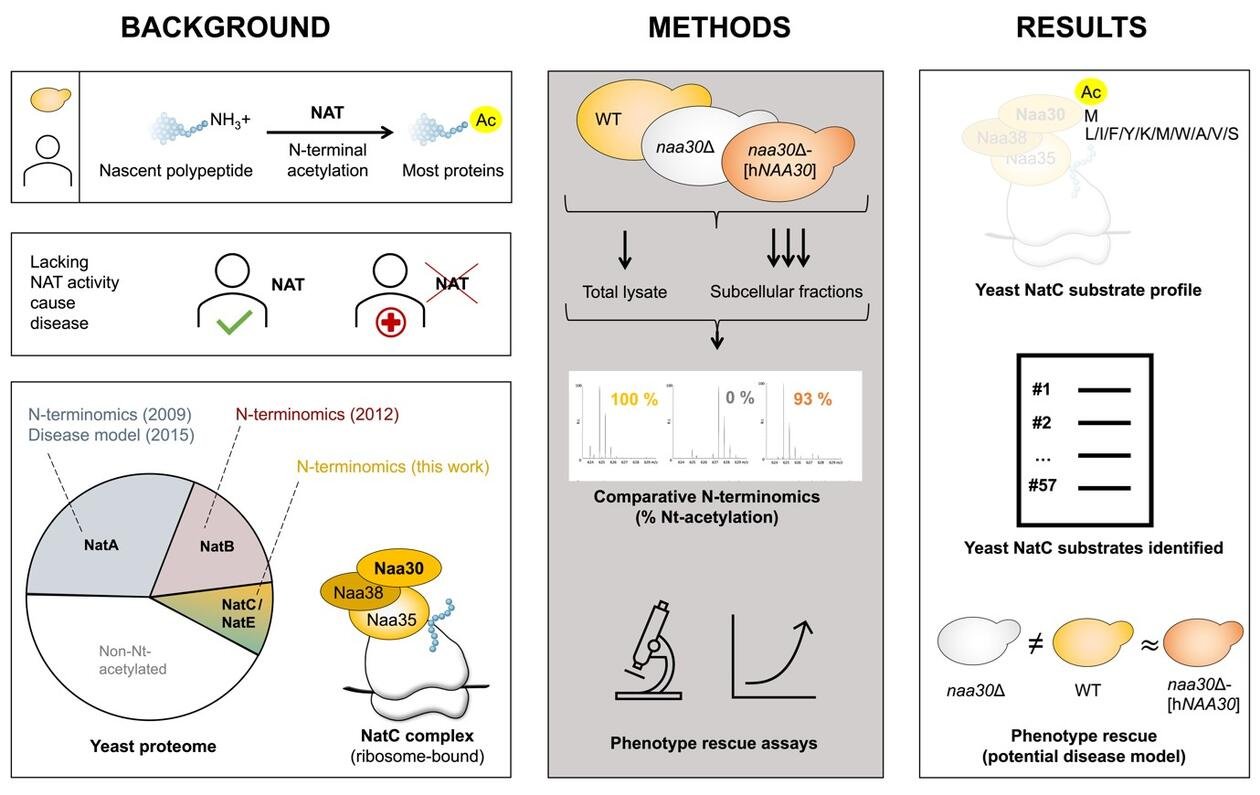Welcome to the Arnesen lab
We are a Research Group at the University of Bergen, Norway, located on the 6th floor in the Biomedical Building at the Department of Biomedicine. We take a variety of biochemical, molecular and cell biology approaches to address fundamental questions related to the biology of protein modifications.
In particular we are interested in protein N-terminal acetylation. We study N-terminal acetyltransferases and how these enzymes influence cellular processes and human disease.
background
n-terminal acetylation
Most proteins are chemically modified in the cell and such modifications are often crucial for the protein’s ability to carry out a function. N-terminal acetylation is one of the most common modifications in eukaryotes. It is catalyzed by N-terminal acetyltransferases (NATs) which are linked to cancer, genetic syndromes, and regulation of human metabolism.
The Arnesen lab is part of the Systems Biology and Translational Cell Signaling (STC) research group at the Department of Biomedicine, University of Bergen, Norway.
RESEARCH NEWS
Decoding human biology one protein at a time
The human genome was sequenced many years ago and our ~20.000 genes are mostly defined. However, a large portion of our proteins, the products encoded by the genes and involved in all biological processes, remain functionally unexplored. Arnesenlab researchers recently solved the structure and function of another uncharacterized human protein that turns out be linked to kidney disease.
→ Read more
———————————————————
Improved understanding of oxygen sensors in human cells
Oxygen is vital for human life and so is our ability to respond to low oxygen levels. Researchers at the University of Oxford and University of Bergen have uncovered new factors defining how human cells respond to hypoxia.
→ Read more
———————————————————
SHEDDING NEW LIGHT ON BRAIN CALCIFICATION
Brain calcification can cause movement disorders and cognitive impairment. Researchers at the Arnesen Lab at UiB have now identified a gene that provides new insight into how these calcifications occur. → Read more
Photo: Viorica Chelban.
———————————————————
UIB RESEARCHERS SOLVE PROTEIN MYSTERY
N-terminal acetylation shields proteins from degradation, which in turn affects motility and aging. → Read more
———————————————————
Removing Nt-acetylation increases the turnover of ribosomal proteins
The impact of the most common protein modification, N-terminal acetylation, has remained a conundrum in the field since its very origin. This research adds a piece to this puzzle. → Read more
———————————————————
First yeast NatC-focused N-terminomics
The yeast S. cerevisiae still serves as a valuable model for studying N-terminal acetylation. Together with our collaborators in Ghent, Arnesen lab now report the first yeast NatC-focused N-terminomics. → Read more
———————————————————
Pathogenic NAA20 variants discovered
Variants in different genes may cause developmental delay and various syndromes. Researchers from USA, Saudi Arabia and Norway recently uncovered pathogenic gene variants causing developmental delay and intellectual disabilities in a gene not previously linked to genetic disease. → Read more.
OTHER NEWS
Hanne Øye receives her PhD degree
Arnesen lab congratulates Dr. Hanne Øye who successfully completed her trial lecture and PhD defense on the 25th of April 2025.
→ Read more
———————————————————
cover of the April 2025 issue of TIBS
Arnesen Lab's new review on protein N-terminal modifications was featured on the cover of the April 2025 issue of Trends in Biochemical Sciences (TiBS). The cover image was designed by the PhD students Malin Lundekvam and Alessia Caiella.
→ Read the feature review.
———————————————————
NAA80 KO zebrafish gets cover image of Life Science Alliance
A joint publication by Arnesen lab and Varshney's lab on Naa80 KO zebrafish got the cover image of the December 2024 issue of Life Science Alliance. Image shows the visualization of stereocilia (cyan) and kinocilia (magenta) in the developing inner ear of zebrafish.
→ Read the published article.
———————————————————
NATS AT THE NBS CONTACT MEETING
Master student Åse Karine Bekkelund and PhD student Silje Kathrine Larsen presented their NAT-related posters at the Norwegian Bioscience Society (NBS) 59th Contact Meeting at Gol. → Read more
———————————————————
TMS STARTING GRANT
Henriette Aksnes from the Arnesen lab received the TMS Starting Grant for the project: "The role of membrane protein modifications in age-related brain pathology (MemBrain)". → Read more
Photo: Melanie Burford/ Trond Mohn stiftelse
Last updated August 12, 2025













